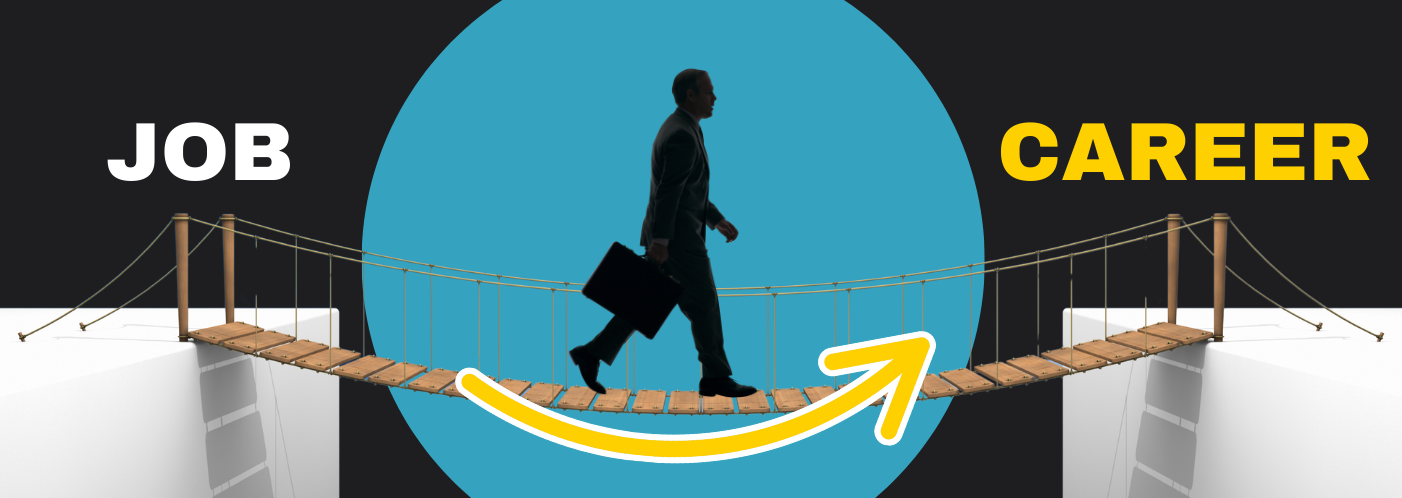Beyond the Paycheck: Why Career Pathing is the New Key to Employee Loyalty
If You Don't Show Them a Future, They'll Find One Elsewhere
A competitive salary might get a great employee in the door, but it won’t make them stay. The number one reason top performers start looking for a new job isn't money—it's stagnation. When ambitious employees can't see a clear path forward, they will create one for themselves, often at another company. Career pathing is the strategic process of showing your team what’s next and how to get there. It’s the single most powerful way to turn a job into a career and an employee into a loyal advocate. At Sedona Staffing, we connect career-minded professionals with forward-thinking companies that understand growth is the ultimate retention strategy.
🔍 What is Career Pathing? Career pathing is a transparent framework that shows employees potential routes for professional growth within an organization. It’s more than a simple promotion ladder; it's a collaborative roadmap that outlines the skills, experience, and development needed to advance. An effective career pathing program includes:
- Vertical Growth: Moving up to a role with more responsibility.
- Lateral Moves: Broadening experience by moving to a new department or function.
- Skill Deepening: Becoming a subject matter expert within their current role.
- Development Plans: The specific training, mentorship, and experiences needed to progress.
🤝 Why Career Pathing is a Win-Win When companies invest in their employees' futures, everyone benefits. It creates a virtuous cycle of growth and loyalty.
- For Employers: It leads to higher retention, a stronger internal talent pipeline, increased employee engagement, and simplified succession planning.
- For Employees: It provides a clear sense of purpose, motivation to learn, increased job satisfaction, and the feeling of being genuinely valued by their organization.
✅ Five Steps to Implement Career Pathing
- Create Transparent Career Maps For key roles, document the competencies, skills, and experience required for advancement. Make these "maps" accessible so employees can see exactly what it takes to move from their current role to the next level.
- Hold Regular Development Conversations Make career goals a standard part of one-on-one meetings. Go beyond daily tasks and ask questions like, “What skills do you want to build this year?” and “What kind of role interests you in the long term?”
- Invest in Upskilling and Reskilling Once a path is identified, provide the resources for growth. This could be mentorship programs, online course subscriptions, tuition reimbursement, or opportunities to lead small projects.
- Promote and Encourage Internal Mobility Actively look for internal candidates before searching externally. An internal job board and a culture that celebrates cross-departmental moves show you’re serious about employee growth.
- Recognize Progress, Not Just Promotions Acknowledge and celebrate developmental milestones. When an employee completes a certification, masters a new software, or successfully mentors a junior colleague, that’s a win for everyone.
🌟 How It Looks in Action
Without Career Pathing: ➡ A talented marketing specialist masters her role. She sees no clear "next step" and feels stuck. She starts applying for "Senior Marketing Specialist" roles at other companies to get the title and challenge she craves.
With Career Pathing: ➡ The same specialist has regular growth conversations with her manager. They identify a need for project management skills. The company invests in her PMP certification, and she begins leading small campaigns, preparing her for a future Marketing Manager role within the company.
🗣️ Q&A
Q: Our company is small and has a flat structure. How can we offer growth?
A: Growth isn't just about titles. Offer growth in expertise, responsibility, and impact. Create opportunities for employees to lead projects, mentor new hires, or become the go-to expert in a specific area.
Q: What if an employee's career goals don't align with the company's needs?
A: Transparency is key. A frank and supportive conversation is always better than letting an employee feel stuck. You might discover a new need you can build a role around, or you can help them build transferable skills, creating goodwill.
Q: How do we start if we have nothing in place?
A: Start small. Begin with one department and simply encourage managers to start having these conversations. You don't need a complex system overnight; you need a culture of communication.
Q: Doesn't this encourage employees to ask for promotions we can't give?
A: It encourages conversations about development. It helps manage expectations by showing that growth is a journey of acquiring skills and experience, not just waiting for a title to open up.
📢 Final Takeaway A paycheck is a transaction. A career path is a partnership. In today’s talent market, employees are looking for organizations that will invest in them as people, not just as workers. By providing clear opportunities for growth, you create a powerful reason for your best people to stay, contribute, and build their future—and yours.
This article is for informational purposes only and job placement or employment is not guaranteed. This article was written by our team of staffing experts. We leverage advanced AI tools to assist with research and composition, and every piece is reviewed and edited by our team.





